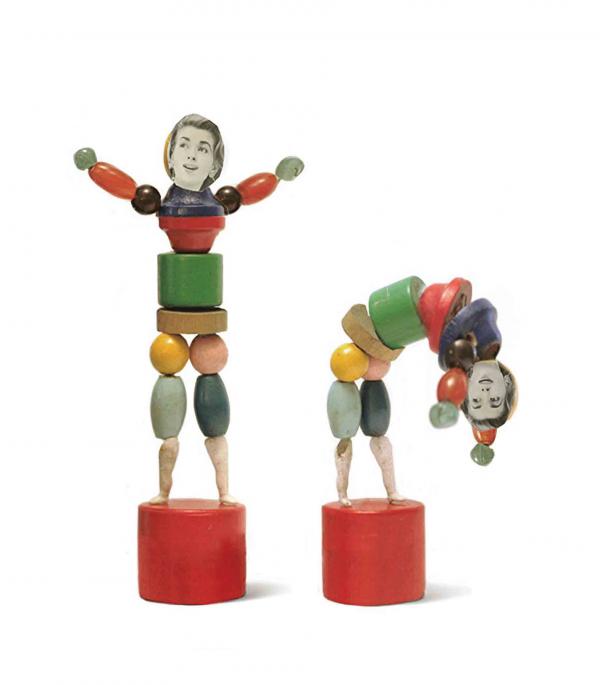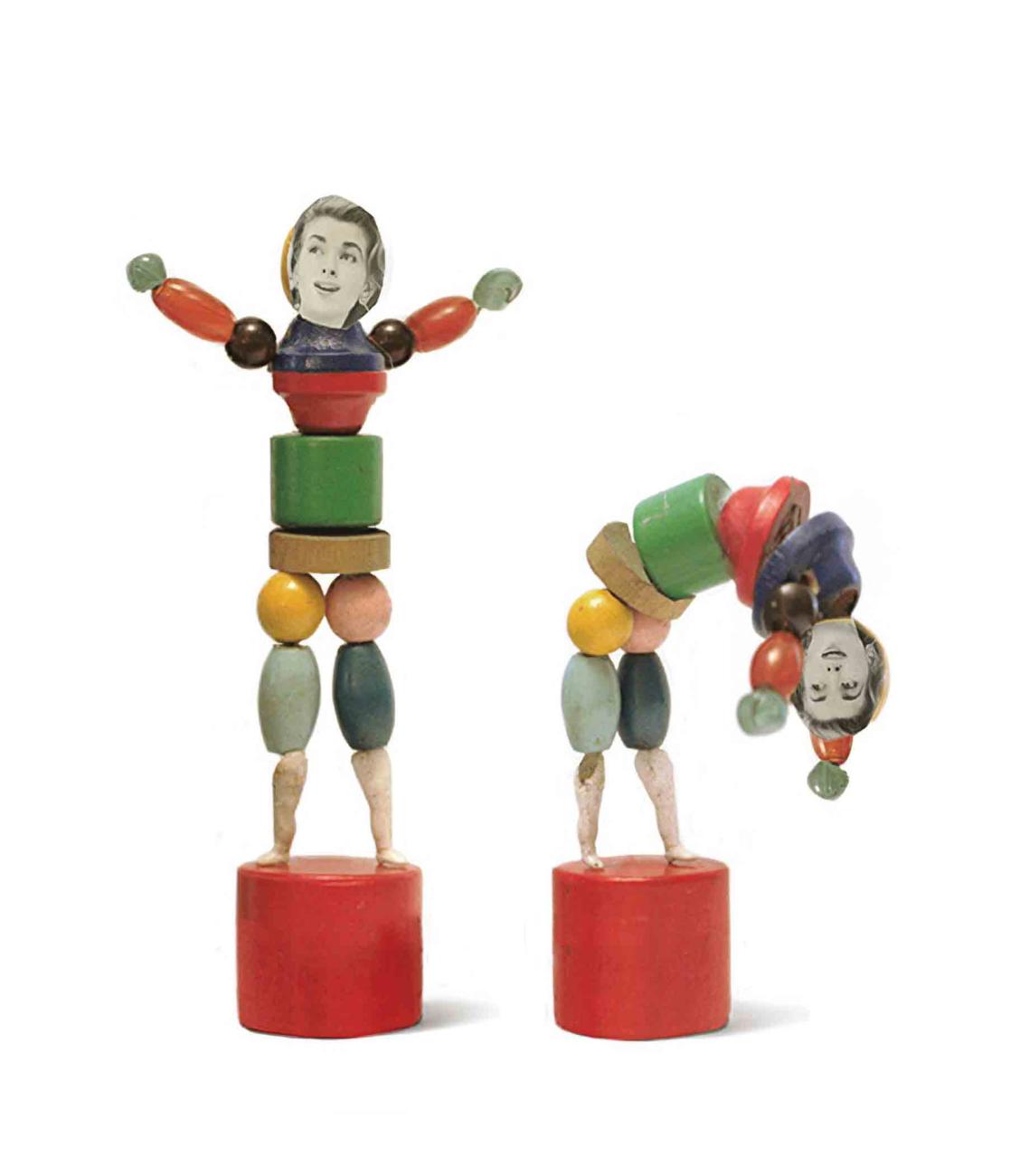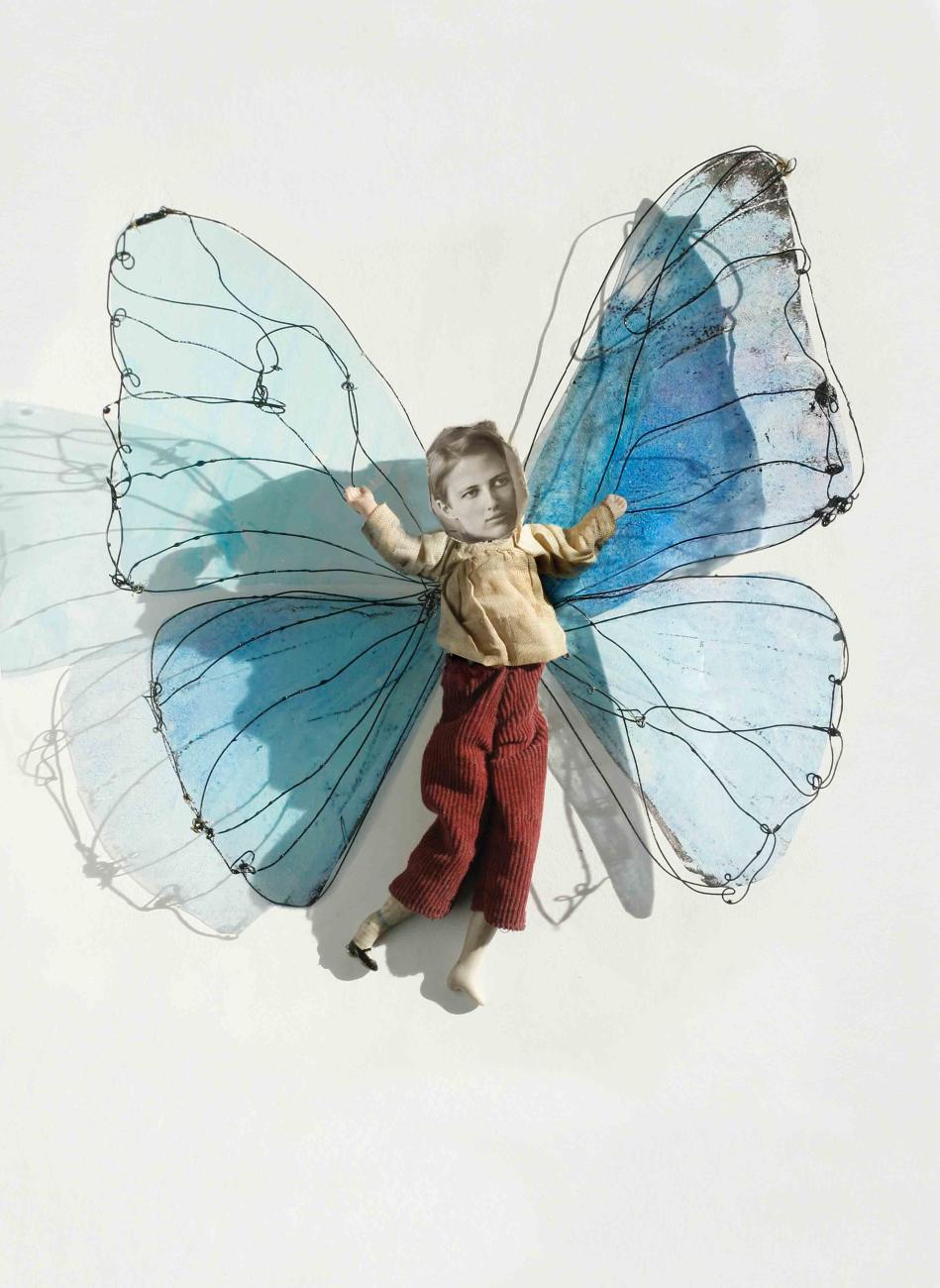“To steer psychology away from the darkness and toward light.” —Martin Seligman
“How to gain, how to keep, how to recover happiness is in fact for most men at all times the secret motive of all they do, and of all they are willing to endure.” —William James
According to Martin Seligman in his memoir, his young daughter’s rebuke as they were weeding the family garden together launched positive psychology: “If I can stop whining, you can stop being such a grouch,” she had said. For many years, Seligman had been researching helplessness in animals and depression in human beings. The work, as five-year-old Nikki noticed, made him gloomy, impatient, and critical.
What if, he began to wonder, he studied well-being instead of unhappiness, accomplishment instead of failure, strength instead of sickness? Perhaps psychology could become less fixated on neuroses, less dependent on Prozac, and, altogether, more useful. Perhaps he could improve his life and redirect the profession: “Positive psychology called to me just as the burning bush called to Moses.”
With the zeal of a convert, Seligman promulgated his insights to foundations, colleagues, professional communities, and the general public. In a torrent of productivity stretching to three decades, he wrote dozens of papers and best-selling books, created a research center to attract acolytes, and introduced positive psychology to corporations, schools, medical communities, and the military.
The premise of positive psychology is that well-being can be defined, measured, and taught. Well-being includes positive emotions, intense engagement, good relationships, meaning, and accomplishment (PERMA). Questionnaires can measure it. Trainers can teach it. Achieving it not only makes people more fulfilled but makes corporations more productive, soldiers more resilient, students more engaged, marriages happier. Seligman even came up with a formula: H = S + C + V. Happiness equals your genetic set point plus the circumstances of your life plus factors under voluntary control.
Psychologists discovered that humans tend to remember unsolved problems, frustrations, and failures more than their successes. This is the negativity bias, most recently described by John Tierney and Roy F. Baumeister in their 2019 book The Power of Bad: How the Negativity Effect Rules Us and How We Can Rule It.
Positive psychologists counsel: Fight pessimism, remember the good, count your blessings, focus on strengths—reframe the way you look at reality and your life. It is an upbeat philosophy suitable for a Western world that Seligman insists is getting better and better, an alternative to the catastrophic thinking required of our Stone Age ancestors. It is also an alternative, he believes, to the epidemic of depression poisoning American life in what he calls our “Age of Melancholy.” America needs to focus less on gross national product, more on national well-being. In January 2000 Seligman and his colleagues issued a manifesto in the magazine American Psychologist: “Psychology is not just a branch of medicine concerned with illness or health; it is much larger. It is about work, education, insight, love, growth, and play.”
Unlike previous promises of happiness, positive psychology insists it is evidenced-based, using the resources of contemporary social science—surveys, longitudinal studies, meta-analyses, animal experiments, brain imaging, hormone measuring, and case studies. Most recently, Seligman has turned to big data analyses of words in Facebook and on social media. He and his team have created a curriculum of positivity. They have measured the impact of training and the surprising benefits of learned optimism.
Using the principles of positive psychology, Metropolitan Life Insurance Company recruited the most effective salespeople, those who would not give up after repeated rejection. West Point predicted which plebes would drop out after “Beast Barracks,” the notoriously difficult summer introduction to military life. Soldiers in the field recovered more quickly from PTSD. Australian schoolchildren became less anxious and more engaged after intensive training in the basics of positive psychology. Optimism predicts success on the playing field. With learned optimism, patients with heart disease can live longer. Seligman claims, “Happiness doesn’t just feel good, it is good.”
Who is this man who claimed so much?
Martin Seligman grew up in Albany, New York, the son of civil servants. Always a precocious student, he excelled at The Albany Academy and at Princeton, where he studied philosophy under the soon-to-be-famous Robert Nozick and joined an effort to establish the Wilson Lodge, a cerebral alternative to the university’s eating clubs.
Generally, Seligman describes himself as brainy, fast, confident, rude, self-absorbed, depressed, and pessimistic. He taught at Cornell briefly and, in 1969, resigned in protest when the Black Panthers brandished rifles and took over the student union. Moving to the University of Pennsylvania, he studied helplessness in rats and dogs and depression in humans.
Always an improver, Seligman read widely, listened to classical music, and conversed with scientists like Carl Sagan. For relaxation, he played bridge. Gradually he concluded that Freudian therapy and drugs were not the answer to an epidemic of depression. They might temporarily relieve pain, but neither allowed patients to flourish. He began to rebel against psychology’s fixation on pathology and its disdain for applied research. Why not scientifically study well-adjusted, happy human beings, discover how they flourish, and make their secret of success a model for the many who lead what Henry David Thoreau called “lives of quiet desperation”?
In his riveting memoir, The Hope Circuit: A Psychologist’s Journey from Helplessness to Optimism, Seligman described how he battled a recalcitrant psychology establishment, captured the presidency of the American Psychological Association, attracted like-minded associates, and built an empire of learned optimism, creating dozens of studies and a mountain of questionnaires.
Along the way Seligman wrote a series of books in incisive, accessible prose, championing his beliefs—among them Learned Optimism, Authentic Happiness, and Flourish. The books are repetitive, but he gives his insights new impact with epigrammatic, original, and compelling new phrases—for example, “Mental health is much more than the absence of mental illness.”
In the memoir, Seligman describes how with two young children he was divorced from his first wife, then fell for a mesmerizing young graduate student who left him, then battled depression before finding love in 1988 when he married Mandy McCarthy, a student of his from England who gave him unconditional love and five more children, clearly a contribution to his positivity. Before Mandy, he had disdained the word happy, subscribing to the Schopenhauer-Freud dictum that the goal in life was to be less miserable. Now he aspired to be “happier,” rather than just less “unhappy.”
“Every day, in every way, I am getting better and better” was a well-known mantra encouraged by the French psychologist Emile Coue in the early twentieth century. Seligman wanted to distance himself from sentimental slogans and self-help books. He insisted that his first best-seller, Learned Optimism, was scientific and included cautionary notes: Optimism required work. Pessimism had its uses. Temperament influenced moods. Income affected outlook. Eros was powerful—“the hidden dirty secret [was] how strongly it powers education, the progress of science, and the life of the mind.” In short, Seligman wanted a philosophy that was transformative, evidenced-based, and realistic. He also wanted a philosophy that validated good character, “kindness, wisdom, integrity, and courage.”
The Diagnostic and Statistical Manual of Mental Disorders on every psychologist’s shelf listed the varieties of mental illness. Why not a “manual of sanities”? Why not analyze what is right with people rather than what is wrong? Why not pay attention to the normal as well as the diseased? A DSM of virtue? Over a three-year period starting in 2000, Seligman and his team scrutinized texts ranging from Confucius and Socrates to Whitman and Freud, as well as articles from contemporary social science researchers. They ended up with an 814-page encyclopedia weighing 3.5 pounds and titled Character Strengths and Virtues. The book cited six core virtues—wisdom, courage, humanity, justice, temperance, transcendence—which yielded 24 strengths. Among the strengths are bravery, modesty, persistence, vitality, curiosity, social intelligence, spirituality, leadership, and—after much debate among the writers—humor.
Eminent scholars analyzed each virtue. The book lists dozens of studies, illuminating examples, and mini biographies. Lincoln is a paragon of forgiveness, Washington of honesty, T. S. Eliot of humility, Lou Gehrig of gratitude. Darwin legitimized the view of humans as mere animals. Japanese culture values modesty. Curiosity may have a biological basis. Self-control and self-regulation are uniquely human traits. Americans rank prudence, modesty, and self-regulation at the bottom of the recommended list.
Character Strengths and Virtues includes a Values in Action (VIA) Signature Strengths Survey taken by more than eleven million people. The test ranks a person’s strengths and can lead to self-knowledge and career guidance. It is widely used in business, education, and therapy. The emphasis is on measurement, but the advocacy is clear. Identifying and exercising strengths and virtues is a key component of positive psychology and a way to mitigate what Seligman terms a character crisis in America indicated by the “hedonism of the 1960s, the narcissism of the 1970s, the materialism of the 1980s, and the apathy of the 1990s.” This book, a dense and illuminating compendium, increased Seligman’s scholarly reputation and attracted more converts.
I am talking to Laurie Santos, professor of psychology at Yale, before the opening of the Templeton Dinner at the New Haven Lawn Club in November of 2018. The philanthropist John Templeton spent millions of dollars supporting academics who study the connection between religion and well-being. Santos’s course, “Psychology and the Good Life,” has made her famous, much of it drawing on Seligman’s insights.
Santos became head of Silliman College at Yale, which gave her access to student concerns. She was struck by the high levels of stress and anxiety students reported, concerned they were fixated on a good job rather than on developing a meaningful philosophy of life. She believed that exposing students to evidence-based insights from contemporary psychology might dispel some of their gloom and proposed a small class for 35 students. Twelve hundred showed up. Professor Santos became a sensation: articles in the New York Times and Oprah.com, requests for lectures, and an online Coursera viewed in more than 100 countries with 2.5 million enrolled.
I ask Santos: “What’s new about anxious undergraduates?” She replied, “There really is a mental health crisis and not just at Yale. In the last five years, students all over America report unprecedented unhappiness.” I ask her why. She is not certain but mentions “anxiety about an uncertain job market, fierce competition among high achievers, little free time, social media.” She quickly runs through some of the suggestions she will mention in her talk tonight. Happiness is within your control. It takes effort and practice. Money is less critical than you think. Social connections are vital. Helping others increases well-being. Live in the present. Express gratitude. Employ healthy practices. I ask her what remedy is the most important. “Without a doubt, sleep. Every study proves sleep-deprived students are unhappy students.”
Santos is expanding the basics of positive psychology on her podcasts and in television interviews to deal with the mental health crisis during COVID-19: “Turn on the compassion muscle for yourself and others,” focus on your signature strengths, limit anxiety-producing news, emphasize routine and habits.
Seligman has predecessors whom he credits. Abraham Maslow invented the term positive psychology and celebrated mentally healthy individuals such as Albert Einstein and Henry David Thoreau. Aaron Beck popularized cognitive behavior therapy, which offers evidence-based strategies to counter catastrophic thinking.
Among Seligman’s many colleagues in the field is Angela Duckworth, who has written a best-seller, Grit, which argues that achievement requires perseverance and passion more than talent, an insight particularly important to anyone who blames poor performance on teachers and resources alone. Kay Redfield Jamison, an expert on manic depression, describes an array of politicians, artists, and scientists whose signature strength is exuberance. Mihaly Csikszentmihalyi, an authority on creativity, popularized “flow” to describe individuals—surgeons, teachers, rock climbers—who experience intense happiness when they are fully engaged. After counseling Harvard graduates, Shawn Achor discovered that happiness and optimism flood our brains with dopamine and serotonin and fuel performance and achievement.
These proponents of positive psychology believe that we have enormous untapped potential. Their mandate is “the scientific study of optimal human functioning.” They echo America’s first psychology educator, William James, who wrote in his essay “The Energies of Men”: “Compared with what we ought to be, we are only half awake. . . . We are making use of only a small part of our possible mental and physical resources.”
Of course, positive psychology has its critics. In the Yale Daily News, on October 13, 2019, a senior at Silliman College takes Professor Santos to task for emphasizing personal happiness at the expense of systemic social change and for denigrating careerism and banks like Goldman Sachs. Some say positive psychology offers common-sense maxims, like those contained in All I Really Need to Know I Learned in Kindergarten by Robert Fulghum, as well as in the hundreds of self-help books lined up on library shelves and at the check-out counter in bookstores. Do we need scientists to tell us to live in the present or exercise? A close colleague of Seligman, Chris Peterson has written, “There’s a temptation to bulls—in positive psychology.”
Pessimists, meanwhile, boast a distinguished lineage. Ecclesiastes states that riches, toil, and pleasures are all meaningless, and with wisdom comes sorrow. Samuel Johnson concluded “we are not born for happiness.” Followers of Sigmund Freud insist that, deep down, humans are aggressive and conflicted, rarely happy.
The success of positive psychology has given rise to contrarian books with titles such as Stop Smiling, Start Kvetching and The Positive Power of Negative Thinking. Such books denounce “the tyranny of the positive attitude.” The book Bright-Sided by Barbara Ehrenreich (Seligman’s most formidable critic) is acid and incisive. She mocks Seligman’s happiness formula and the smile studies done by other positive psychologists that purport to prove that changing facial expression can trick our brains into happiness. She criticizes the profiteering from corporations and Seligman’s support from the conservative Templeton Foundation with its attachment to the status quo.
Seligman believes the world is getting better and learned optimism will make its inhabitants flourish. Citing the optimism preceding the Iraq War, the irrational exuberance causing the Great Recession, income inequality, and the upbeat propaganda that supports dictators, Ehrenreich argues that in an unfair, still dangerous world, realism and defensive pessimism are necessary. Today, in a pandemic paralyzing the globe, Seligman’s optimism might even seem facile, his defense of it suspect.
Critics question specific conclusions: Is there a genetic set point for happiness? Is the influence of money underestimated? Do we actually adjust to setbacks, such as divorce and unemployment, or to catastrophes like COVID-19? Some critics got personal, blaming Seligman’s studies of “learned helplessness” for the CIA’s enhanced interrogation after 9/11 and for “blind patriotism” in teaching resilience training to the military.
Historians of happiness, such as Darrin M. McMahon, note that sages in the past have discovered some of the insights of positive psychology, often writing with more depth and eloquence. Aristotle noted that happiness is more than amusement and requires virtue and moderation. Jesus preached gratitude and kindness. Anticipating cognitive behavior therapy, Shakespeare has Hamlet tell Rosencrantz and Guildenstern: “There is nothing either good or bad but thinking makes it so.” Following the advice of positive psychology to write down goals and strengths, Ben Franklin created a chart listing 13 virtues and noted his progress at the end of each week. Later in life he concluded: “Human felicity is produced not so much by great Pieces of good Fortune that seldom happen, as by little Advantages that occur every Day.”
For five years, as a teacher and former head of school, I traveled around the country, talking to students about heroes and heroines of American history, acknowledging their strengths and their imperfections, and, through a Q and A, encouraging students to differentiate heroic men and women from celebrities. I agree with Seligman’s critique of a celebrity-entertainment culture and that students need character education in addition to critical thinking and should aspire to something higher than the pleasant life. But I believe positive psychology relies too much on lists and practices and not enough on biographies of exemplary lives.
KIPP charter schools, whose motto was until this summer “Work Hard, Be Nice,” turned to Seligman as a consultant. He has no use for the self-esteem movement in education that excludes achievement and offers facile optimism. He believes that critical thinking, the reigning goal in all schools, should be supplemented by nonintellectual strengths; that middle school students should learn to dispute catastrophic thoughts and adopt an optimistic, explanatory style; and that all students should learn life skills such as empathy, grit, and resilience.
“Positive education” has spread from Pennsylvania to Great Britain, Mexico, and Australia, according to Seligman. Schools and teachers trained in positivity have improved in both achievement and mental health. He admits, however, “changing the educational system of the world is daunting.”
Seligman’s defense of optimism reaches beyond individual well-being. It embraces history, civics, literature, journalism, education, gender relations, and religion. He asks Bill Moyers, “Has journalism no positive values?” Seligman would like to see more children’s books like The Little Engine That Could, young adult novels that portray exemplary lives, and adult fiction featuring characters with both strengths and virtues. History is not merely a tale of woe, literature an insistence on tragedy. He believes the story of man is getting better, quoting with approval Steven Pinker’s arguments in his book Enlightenment Now that violence is decreasing, life span increasing, humanitarianism ascending, comfort and conveniences multiplying. Fifty years ago, men dominated psychology graduate departments and studied conflict, stress, and dominance. Today women predominate and emphasize “cooperation, positive emotion, engagement, trust and relationships.”
Seligman analyzes presidential elections and concludes that the more optimistic candidate usually wins. He predicts that the Enlightenment belief in reason, science, and progress will win out. He has written that “almost everything is better in every wealthy nation than it was fifty years ago”—a conclusion he might modify after the pandemic.
Positive psychology is a secular philosophy, unlike self-help books that depend on assistance from a higher power, such as Joel Osteen’s Become a Better You and Rick Warren’s The Purpose Driven Life. Seligman criticizes a fearful God of the Old Testament and its nullification of human agency. In a world with less and less suffering, the crucifix, he argues, loses much of its appeal. He is, however, sympathetic to religion, recognizing that it contributes to well-being by promoting social bonds and praising kindness. At the conclusion of The Hope Circuit, Seligman repudiates skepticism and suggests there is a hope circuit in the brain that anticipates positivity in Christianity, Islam, and Judaism. The Yale Divinity School offers the project “Theology of Joy and the Good Life,” which in its emphasis on flourishing and cheerfulness has goals similar to those of positive psychology.
Seligman can come across as reactionary. He quotes with approval Andrew Jackson’s speech declaring “Man can be elevated . . . more endowed with divinity.” He favors a Victorian nineteenth century that was optimistic and believed in progress. He criticizes the narcissism and excessive individualism that he says erupted in the 1960s and which persist today. “Faith in God, community, nation, and the large extended family have all eroded.” He embraces old-fashioned virtues such as patriotism, progress, free will, resilience. He stresses character more than personality. A moralist, he criticizes popular culture and people who are indifferent to great thinkers and comfortable with contentment. He even sees virtue in the “Yankee self,” which was “less concerned with feeling and more concerned with duty.” He is a repentant pessimist, a convert to idealism. “I was and I am an unabashed do-gooder.”
Positive psychology is now taught in hundreds of other psychology courses besides Laurie Santos’s course at Yale. It has made its way into K–12 schools through a renewed emphasis on social-emotional learning. It has influenced schools in Australia and the United Kingdom and has made inroads into corporations (promoting advancement at work), the military (contributing to a psychologically fit army), and hospitals (boosting immune systems).
Hundreds of magazine articles and dozens of books have been published on positive psychology. Thousands of researchers have produced papers on it. Online, a reader can fill out questionnaires that probe individual well-being and recommend exercises to improve it. A student can earn a master’s degree in applied positive psychology from the University of Pennsylvania.
The International Positive Psychology Association sponsors a world congress whose members include geneticists, economists, and professors of business education. Professional magazines include the Journal of Happiness Studies, the Journal of Positive Psychology, and the Journal of Well Being Assessment. The United Nations publishes a World Happiness Report. The Nordic countries rank high. America is number eighteen. Very poor countries do not fare well.
Seligman is proud of his role: “I became a natural inspirer and I acquired charisma.” He rates his own PERMA very high. He is not, however, dogmatic. He concedes that positive psychology is a young science inclining to hyperbole. He insists on the importance of welcoming criticism. He asks, “When is our biology our destiny?,” while contending that at least half of personality is not inherited. He believes that optimism is hard won, that melancholy people may be wiser, that what he calls “externals,” such as money and status, may be minimized by positive psychologists. He agrees with Ed Diener, his colleague in the movement, that applying the insights of positive psychology is an art. In Seligman’s most recent book, he claims that what really distinguishes our species is not thinking about the present or past, but constantly imagining future possibilities.
Seligman wants to improve the emotional life of normal people and worries that positive psychology may become a fad of the privileged at Davos and the Aspen Institute. Positive psychology is a product of the academy, written for the highly educated, even though, according to Chris Peterson, Seligman’s closest colleague for many years, the optimistic bias is looked down upon by intellectual elites.
Can positive psychology appeal to Americans who work hard at unskilled jobs, often two jobs, to clerks who are bored, to construction workers who come home tired, and who in the evening prefer entertainment? To the majority who have a job, not a calling? Can it appeal to those who equate happiness with money and pleasure, not character or meaning? Is it utopian to expect a high percentage of men and women to center their lives around flow and meaning, wisdom and transcendence, virtue and gratitude, and to self-actualize? Is there room for Seligman’s advice in a capitalist America, competitive and materialistic, with all the inequality highlighted by the pandemic?
Still, taking into account sages of the past and common sense, recognizing our rudimentary knowledge of the brain, conceding the imperfect nature of social science techniques, and acknowledging the fallibility of human beings and the sudden swings of history, the conclusions of positive psychology can validate experience and offer hope:
•Genetics shape mood and personality, but only in part.
•Human beings can change and improve.
•Moods matter but can be altered by understanding circadian rhythm.
•Individuals have signature strengths that can be identified and employed.
•Flow moments exist and can be cultivated.
•Other people matter.
•Strong social bonds are crucial.
•Marriage and religion contribute to well-being.
•Positivity improves health, work, creativity, and relationships.
•Intrinsic adaptation to both the good and bad is useful.
•Optimism is a learned skill.
•Happiness requires effort.
•Happiness is contagious.
I am on a video call in early February of this year with Seligman, who in his memoir wrote, “I have never been good at small talk.” We talk for an hour. He is warm, meditative, and very articulate. Our conversation is wide-ranging. Confident in his mission, he concedes “a happiness set point can vary depending on circumstances,” and agrees that “pessimism can be useful” and that adjustment to changing circumstances is not guaranteed. He remains skeptical of excessive introspection and “unbridled individualism.”
“I would like to learn more history,” he tells me, and that, at his older daughter’s suggestion, he is reading The Cambridge World History seven-volume set. I recommend he look at Samuel Smiles, author of Self-Help and the Victorian champion of free will, character, and perseverance. I ask him about Quiet, Susan Cain’s best-selling book praising introverts. He says he hasn’t read it, but adds, “We are happiest with other people.”
In The Optimistic Child, he wrote: “Pessimism is fast becoming the typical way our children look at the world.” He tells me he is concerned about the grim canon of literature in secondary schools and that his daughter is reading Lord of the Flies, The Scarlet Letter, and Macbeth. Near the conclusion of our video call, I say I admire Pinker’s Enlightenment Now. He adds: “The academy resists Pinker’s optimism about the world’s progress.”
My interview with Martin Seligman occurred before we knew of the coming pandemic. Pinker’s critics now have more ammunition, some predicting a new dark age. Seligman’s repeated acknowledgment of the value of pessimism and realism, and his concession that positivity is difficult, protect his philosophy somewhat from the accusation of unreflective optimism in catastrophic times. His insistence on the value of strong social bonds and that “other people matter” remains relevant in the new normal of social distancing.
What is controversial—and will be tested—is positive psychologists’ belief in adjustment, that the human psyche somehow adapts itself to changing circumstances. Can we adjust and “reframe” to a new normal of widespread loss of life, economic destruction, and the uncertainty of COVID-19?
Scientists are starting to map the most complex structure in the universe, our brain, and to understand how billions of neurons, hundreds of genes, and dozens of hormones influence our well-being. Positive psychology is just beginning to connect with this new frontier of human understanding. By shifting psychology’s focus from pessimism and gloom to optimism and hope, Martin Seligman echoes Victorian Robert Louis Stevenson’s dictum “There is no duty we so much underrate as the duty of being happy.” Seligman and positive psychology offer an evidenced-based plea for idealism and affirmation. Living with a pandemic we knew was possible but believed scientists could somehow predict and prevent, we may have to settle on new watchwords—resilience and endurance.








